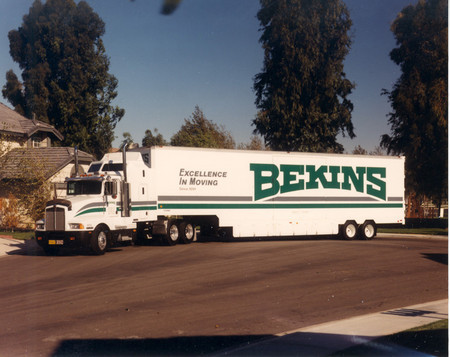Get a movin’

Summer is quickly coming to an end, and the start of a new school year often means a fresh start in a new home.
But before you start packing and unpacking any boxes, consider giving your appliances a little TLC to make the transition easier and prevent any unexpected repairs.
“Moving isn’t fun,” said Rich Gallagher, general manager of Bekins A-1 Movers in Las Vegas. Complicating a move by damaging an appliance or not having the proper hookups at the new location makes it an even more unpleasant experience.
Gallagher, who has been a professional mover for 40 years, said it’s very important to begin preparing your appliances for the move about three days before the move.
“For your freezer, it’s very important that a couple of days before actually moving that it is totally defrosted and dried out. If you just keep it the way it is, mildew can set in,” he said.
Gallagher said this is more likely to happen on moves that take several days. Because the freezer will be sealed and wrapped with a blanket to protect it during transit, there’s a good chance it will mildew when it sits inside the truck.
“Once it sets in, it’s pretty tough to get out,” he said.
The same holds true for refrigerators, although preparations only need to begin about 24 hours prior to the move.
He said they also recommend that any shelves and other loose parts be removed from the inside of the refrigerator and packed separately to avoid breaking them.
Chris Zeisler, a trained RepairGuru with the Canton, Mich.-based RepairClinic.com, said it’s a good idea to put a can of coffee or a box of baking soda inside the refrigerator and freezer to eliminate any odors that might develop.
“If you don’t, the smell may linger for days, sometimes even weeks after moving into your new home,” he said.
If the freezer has an ice maker or the refrigerator has a water dispenser, Gallagher said it’s best to seal off the ends of the water lines.
Then, once it gets to its new destination, the first few rounds of ice or pitchers of water should be disposed in case of contaminants or impurities in the new water lines.
And appliances, particularly refrigerators, should always be moved sitting upright.
Zeisler said appliance compressors contain thin oil, which can drain into the condenser tubing. “If the unit is turned on right away afterwards, the oil can restrict the refrigerant flow causing it not to cool and potentially damaging the compressor. If, for some reason, an appliance with a compressor is placed on its side or back, it should be placed in an upright position for at least 24 hours before it is turned on.”
For washing machines and dryers, Gallagher said it’s sometimes best to call in a professional to disconnect them before a move; this is especially true for gas dryers. He said it’s important to make sure gas appliances are properly disconnected and the gas lines are sealed.
Natural gas is highly flammable and the tiniest spark can set off an explosion or fire.
Gallagher said he tells clients to contact Southwest Gas, which often sends out a representative to disconnect gas appliances at no cost.
For electrical appliances, Zeisler said it’s a good policy to make sure the new residence has adequate power to the outlet where they will be plugged in. If not, call an electrician, he said.
And before reconnecting a washing machine, Gallagher said recommends getting new washers for the hose connections.
“A lot of times, the little seal inside the faucet gets old and cracks. I’ve heard many horror stories about those who didn’t check the seals and woke up the next morning and the house was flooded because the shut-off valve wasn’t good.”
On a final note, Gallagher said it’s extremely helpful if you know where your appliances — as well as your furniture — should be placed by the movers. “Customers usually have an idea of where an item will be placed, but once it gets there, it doesn’t always work. They can save themselves from spending extra money if they have some sort of a plan for where they want items delivered.”